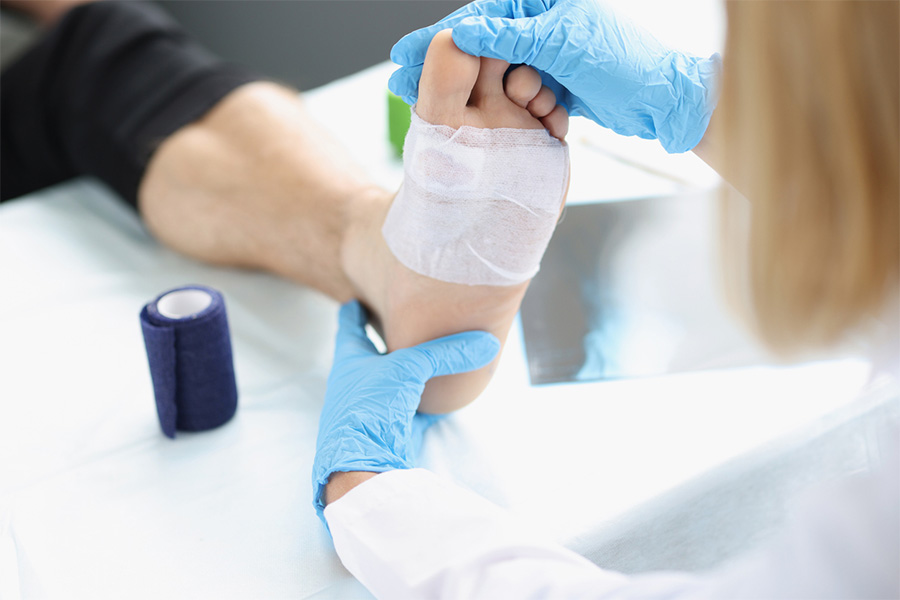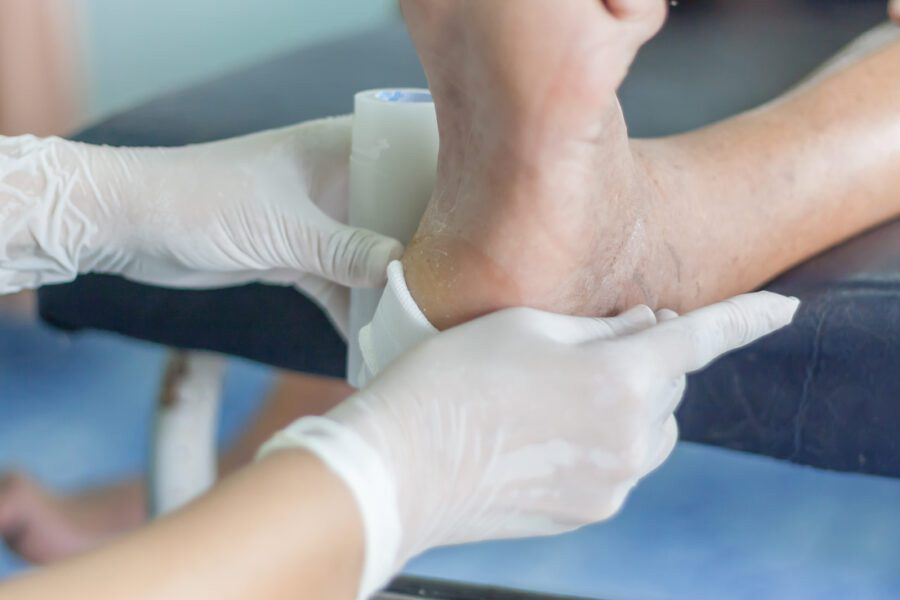Diabetic wound care is important because it helps prevent infection and promotes healing. Diabetes can cause poor circulation, which can lead to slow-healing wounds. Infection is a serious complication that can occur with diabetes, so it is important to take care of any wounds as soon as possible.
There are products specifically formulated for diabetic wounds and skin maintenance. However, even regular wound care products are equally effective when used correctly.
Here are some of the best diabetic wound care products you can use that are podiatrist-approved. Remember, if you are diabetic, always consult a podiatrist before attempting to heal a wound yourself.
Antibacterial Soap
There are a few things to consider when choosing a soap for diabetic wounds. The first is that the soap should be gentle and not contain any harsh chemicals or fragrances. Secondly, the soap should be able to effectively cleanse the wound without irritating it. Examples of gentle, fragrance-free antibacterial soaps include those from Dial, Safeguard, Dove, and Cetaphil.
Antibiotic Ointments or Creams
This help prevents infection and promotes healing. There are many types of antibiotic ointments that can be used for diabetic wound care. Some common ones include bacitracin, neomycin, and polymyxin B.
Silver Wound Dressing
Silver wound dressing is an antimicrobial dressing that is used for the management of wounds, particularly those that are slow to heal. The silver in the dressing helps kill bacteria and other microorganisms, which can help speed up the healing process. Silver dressings are often used for diabetic wounds, as these types of wounds are particularly prone to infection.
Hydrogel Dressing
A hydrogel dressing is a type of wound dressing that consists of a gel made up mostly of water. They are often used to treat wounds that are difficult to heal, such as diabetic foot ulcers. Hydrogel dressings can help promote healing by keeping the wound moist and providing a barrier against infection.
Sterile Gauze Pads
Sterile gauze pads are an important part of diabetic wound care and go over the wound dressing. They can help absorb excess blood and exudate, and provide a barrier between the wound and surrounding skin. Gauze pads should be changed frequently, as they can become saturated quickly. It is important to use sterile gauze pads when caring for diabetic wounds, as this will help prevent infection.
Non-Adhesive Bandages
Non-adhesive bandages are designed to not stick to the skin, which means they won’t irritate or pull at the delicate skin around wounds and possibly disturb wound healing in the process. They’re also more comfortable to wear for long periods of time and less likely to cause allergic reactions. Plus, they allow air to circulate around the wound, which helps promote healing.
Offloading Devices
Offloading products are used to provide support and pressure relief for diabetic wounds. These include walking boots, custom orthotics, diabetic shoes, crutches, walkers, and so on. Offloading devices do not only keep pressure off the wound, but they also protect the wound and prevent interference from healing.
Diabetic Wound Care in Cincinnati, OH
It takes a medical professional to teach you how to properly care for a diabetic wound. The board-certified podiatrists at Cincinnati Foot & Ankle Care are highly experienced in diabetic foot care, providing services such as wound care and custom orthotics for our patients with diabetes. Our friendly foot and ankle doctors will provide clear instructions on how to apply first aid to diabetic wounds for better healing and to minimize the risk of complications.
For superior diabetic foot care, choose Cincinnati Foot & Ankle Care. Schedule an appointment with us by calling our nearest location or using our online
Share

People with diabetes often experience difficulty healing wounds.




